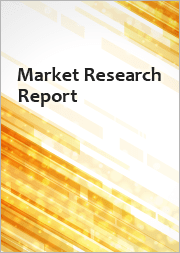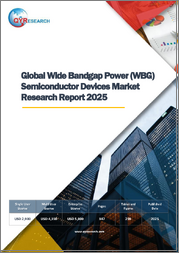
|
시장보고서
상품코드
1643846
세계의 반도체 디바이스 시장 전망(2024-2025년)Global Semiconductor Devices Market Outlook, 2024-2025 |
||||||
지속 가능성 및 사례 트렌드가 산업 및 자동차 시장의 감소를 억제함에 따라 데이터센터를 넘어 엣지 디바이스로의 AI 하드웨어 이동이 혁신적인 성장을 주도하고 있습니다.
세계 반도체 디바이스 업계는 2022년 3.5% 성장 둔화를 기록한 후 2023년 6.9% 감소했습니다. 2023년의 성장은 EV, CASE 및 디지털 전환에 대한 노력에 자본 투하하는 산업 및 자동차 시장에 기인합니다. 2024년(및 그 이후)의 성장은 커넥티비티와 AI/ML의 기술적 융합이 견인하는 것이 되어, 이것이 모든 업종의 제품 개발 활동의 핵심이 됩니다. 5G 배치 증가, AI 스마트폰과 AI PC의 보급 증가, 자동차의 전자 컨텐츠 확대, EV와 AV로의 전환, 팩토리 자동화, 스마트 홈에서의 IoT 디바이스의 보급은 향후 시장 성장을 견인하는 주요 동향입니다. 전통적으로 반도체 시장 성능의 중요한 지표로 간주되어 온 스마트폰과 PC는 향후 유일한 지표가 아닙니다. 시장 진출기업은 여러 수직 시장(주로 소비자 및 자동차)에서 고객 기반의 대폭적인 확대가 예상됩니다. 반도체 디바이스 시장은 수요와 제조 투자의 급증을 기록하고 있지만, 높은 비용, 낮은 마진, 과잉 생산 능력의 위험은 업계가 고려해야 할 몇 가지 측면입니다. 수급 격차 이외에, 지정학적 혼란이나 기능 부족 등 시장은 여러 과제에 직면하고 있습니다. 이러한 시나리오에서는 단기 반도체 디바이스 수요와 2024년부터 2030년까지 주요 성장 기회를 이해하는 것이 필수적입니다. 그 결과 이해관계자는 성장을 가속화하기 위한 전략과 행동계획을 수립할 수 있습니다. Frost & Sullivan의 본 조사는 2025년 반도체 디바이스 시장 전망을 제공하기 위한 것입니다. 주요 최종 사용자와 지역에 걸친 새로운 동향과 성장 기회를 공개합니다. 디바이스의 관점에서는 AI, 5G/6G, IoT, EV, 커넥티드카, AV 등의 새로운 용도에 있어서의 진화하는 설계, 기술 노드, 재료 등이 중요한 포인트가 됩니다.
목차
분석 하이라이트
- 분석 하이라이트
- 2023년 반도체 디바이스 시장 : 예측 vs 실적
- 과거의 분석
- 2025년 주요 예측
전략적 과제
- 왜 성장이 어려워지고 있는가?
- The Strategic Imperative 8(TM)
- 반도체 디바이스 산업에 대한 3대 전략적 필수 과제가 미치는 영향
- 성장 기회가 Growth Pipeline Engine을 뒷받침
성장환경
- 세분화
- 성장환경
- 세계의 반도체 시장 사이즈 : 수익별
거시 경제 요인
- 성장환경 - 거시경제 상황
수익 동향(2020년(2025년))
- 부문별 수익 예측
- 제품 유형별 수익 예측
- 지역별 수익 예측
동향 예측(2024년(2025년))
- 반도체 디바이스 시장 : 세계의 주요 반도체 산업 동향(2024년, 2023년)
- 2024년 반도체 산업에 영향을 주는 동향
- 반도체 산업 동향 : 2025년 vs 2024년
- 2025년 반도체 산업에 영향을 주는 동향
스마트폰 부문 전망(2025년)
- 2025년 시장 현황
- 수익 예측
- 2025년 시장 성능에 영향을 주는 동향의 의미
- 주요 기업
PC 부문 전망(2025년)
- 2025년 시장 현황
- 수익 예측
- 2025년 시장 성능에 영향을 주는 동향
- 주요 기업
데이터센터 부문 전망(2025년)
- 2025년 시장 현황
- 수익 예측
- 2025년 이후 시장 동향에 영향을 주는 동향
- 주요 기업
통신 부문 전망(2025년)
- 2025년 시장 현황
- 수익 예측
- 2025년 이후 시장 동향에 영향을 주는 동향
- 주요 기업
소비자용 전자기기 부문의 전망(2025년)
- 2025년 시장 현황
- 수익 예측
- 2025년 이후 시장 동향에 영향을 주는 동향
- 주요 기업
산업 부문 전망(2025년)
- 2025년 시장 현황
- 수익 예측
- 2025년 이후 시장 동향에 영향을 주는 동향
- 주요 기업
자동차 부문 전망(2025년)
- 2025년 시장 현황
- 수익 예측
- 2025년 이후 시장 동향에 영향을 주는 동향
- 주요 기업
성장 기회
- 성장 기회 1 : 데이터센터의 환경 부하 저감
- 성장 기회 2 : 코어와 엣지에서의 인지 인텔리전스
- 성장 기회 3 : 정부 자금과 정책의 활용
주요 결론
- 주요 결론과 향후 전망
다음 단계
- 성장 기회의 장점과 영향
- 다음 단계
- 별지 리스트
- 면책사항
Moving AI Hardware Beyond Data Centers to Edge Devices is Driving Transformative Growth as Sustainability and CASE Trends Curb Declines in Industrial and Automotive Markets
The global semiconductor devices industry registered a 6.9% decline in 2023 after a 3.5% slowdown in growth in 2022. Growth in 2023 was attributed to the industrial and automotive markets capitalizing on the EV, CASE, and digital transformation efforts. Growth in 2024 (and beyond) will be driven by the technology convergence of connectivity and AI/ML, which will be the core of product development activities across all verticals. Increased 5G deployment, the rising adoption of AI smartphones and AI PCs, greater electronics content in automotive, the migration to EVs and AVs, factory automation, and the proliferation of IoT devices in smart homes are key trends that will drive future market growth. Smartphones and PCs, traditionally viewed as key indicators of semiconductor market performance, will not remain the sole indicators going forward. Market participants are expected to witness significant customer base expansion across several verticals (primarily consumer and automotive). While the semiconductor devices market records a surge in demand and manufacturing investments, the risk of high costs, low margins, and over-capacity are a few aspects the industry needs to consider. Beyond the demand-supply gap, the market faces several challenges, including geopolitical chaos and skills shortages. In such a scenario, it is essential to understand the demand for semiconductor devices in the short term and key growth opportunities from 2024 to 2030. As a result, stakeholders can develop strategies and action plans to accelerate growth. This Frost & Sullivan study aims to provide an outlook on the semiconductor devices market for 2025. It identifies emerging trends and growth opportunities across key end users and regions. From a device standpoint, important aspects include evolving design, technology nodes, and materials across emerging applications such as AI, 5G/6G, IoT, EVs, connected cars, and AVs.
Table of Contents
Analysis Highlights
- Analysis Highlights
- The 2023 Semiconductor Devices Market: Forecast vs Actual
- Historical Analytics
- Top Predictions for 2025
Strategic Imperatives
- Why is it Increasingly Difficult to Grow?
- The Strategic Imperative 8™
- The Impact of the Top 3 Strategic Imperatives on the Semiconductor Devices Industry
- Growth Opportunities Fuel the Growth Pipeline EngineTM
Growth Environment
- Segmentation
- Growth Environment
- Global Semiconductor Market Sizing by Revenue
Macroeconomic Factors
- Growth Environment-Macroeconomic Conditions
Revenue Trends, 2020?2025
- Revenue Forecast by Segment
- Revenue Forecast by Product Type
- Revenue Forecast by Region
Trend Predictions, 2024 and 2025
- Semiconductor Devices Market: Key Semiconductor Industry Trends, Global, 2024 vs 2023
- Trends Influencing the Semiconductor Industry in 2024
- Semiconductor Industry Trends-2025 vs 2024
- Trends Influencing the Semiconductor Industry in 2025
Smartphone Segment Outlook, 2025
- 2025 Market Snapshot
- Revenue Forecast
- Implications of the Trends Influencing Market Performance in 2025
- Key Companies
PC Segment Outlook, 2025
- 2025 Market Snapshot
- Revenue Forecast
- Trends Influencing Market Performance in 2025
- Key Companies
Data Center Segment Outlook, 2025
- 2025 Market Snapshot
- Revenue Forecast
- Trends Influencing Market Performance in 2025 and Beyond
- Key Companies
Communications Segment Outlook, 2025
- 2025 Market Snapshot
- Revenue Forecast
- Trends Influencing Market Performance in 2025 and Beyond
- Key Companies
Consumer Electronics Segment Outlook, 2025
- 2025 Market Snapshot
- Revenue Forecast
- Trends Influencing Market Performance in 2025 and Beyond
- Key Companies
Industrial Segment Outlook, 2025
- 2025 Market Snapshot
- Revenue Forecast
- Trends Influencing Market Performance in 2025 and Beyond
- Key Companies
Automotive Segment Outlook, 2025
- 2025 Market Snapshot
- Revenue Forecast
- Trends Influencing Market Performance in 2025 and Beyond
- Key Companies
Growth Opportunity Universe
- Growth Opportunity 1: Reducing Data Centers' Environmental Impact
- Growth Opportunity 2: Cognitive Intelligence at the Core and Edge
- Growth Opportunity 3: Leverage Government Funding and Policies
Key Conclusions
- Key Conclusions and Future Outlook
Next Steps
- Benefits and Impacts of Growth Opportunities
- Next Steps
- List of Exhibits
- Legal Disclaimer



















